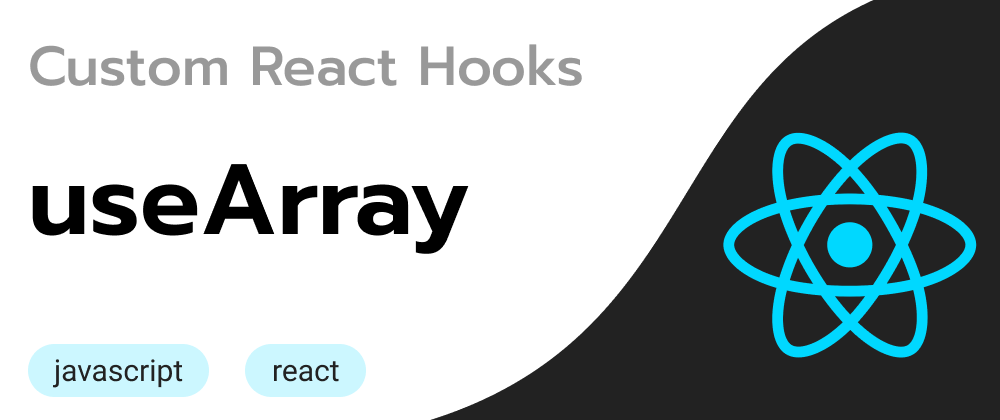Another week, another custom React hook for your hooks backpack. In this episode, we'll implement the useArray hook to make arrays management easier. Ready? Let's go! 😎
Motivation
As usual, let's first discover how this hook could be useful to you. Let's be original and creative: suppose you are building a To-Do list application with React. At some point, you'll have to manage the user's tasks: to do so, you'll use an array, along with the useState hook. The addTask function might look like this:
const addTask = (newTask) => {
setTasks(oldTasks => [...oldTasks, newTasks])
}
Then, you'd have a removeTask function, that could look like this:
const removeTask = (index) => {
setTasks(oldTasks => oldTasks.filter((_, i) => i !== index))
}
As you can see, this can quickly become a bit hard to read.
This is why we will create the useArray hook to simplify our code.
Implementation
First, let's create the hook's base structure.
const useArray = (initialValue = []) => {
const [value, setValue] = useState(initialValue)
return { value, setValue }
}
Then we'll add the push function to add an element at the end of the array.
const push = element => {
setValue(oldValue => [...oldValue, element]);
};
Let's also create the remove function to remove an element at a given index.
const remove = index => {
setValue(oldValue => oldValue.filter((_, i) => i !== index));
};
It can also be handy to add an isEmpty function to check for the array emptiness.
const isEmpty = () => value.length === 0;
Combining all these functions together, here's how the final hook will look like:
const useArray = (initialValue = []) => {
const [value, setValue] = useState(initialValue);
const push = element => {
setValue(oldValue => [...oldValue, element]);
};
const remove = index => {
setValue(oldValue => oldValue.filter((_, i) => i !== index));
};
const isEmpty = () => value.length === 0;
return { value, setValue, push, remove, isEmpty };
};
If you are working with large amount of data, feel free to optimize this hook by using useCallback (more info here).
Example:
const push = useCallback(element => { setValue(oldValue => [...oldValue, element]) }, [])
Also, if you need other array methods such as map or unshift, don't hesitate to adapt it to your needs (you can even add custom functions).
Usage
Back to our To-Do list example. By using our brand new hook, this is how the component could now look like:
const TodoList = () => {
const tasks = useArray([]);
const [newTask, setNewTask] = useState("");
// "Add" button clicked
const handleSubmit = e => {
e.preventDefault();
tasks.push(newTask);
setNewTask("");
};
const handleInputChange = e => setNewTask(e.target.value);
return (
<>
<h1>Todo List</h1>
<form onSubmit={handleSubmit}>
<input type="text" value={newTask} onChange={handleInputChange} />
<button>Add</button>
</form>
{tasks.isEmpty() ? (
<p>No tasks to display</p>
) : (
<ul>
{tasks.value.map((task, index) => (
<li key={index}>
<input
type="checkbox"
onClick={() => tasks.remove(index)}
checked={false}
/>
{task}
</li>
))}
</ul>
)}
</>
);
};
Notice that we don't even need the addTask and removeTask functions anymore, as our tasks.push and tasks.remove ones are already explicit and easy to read.
Improvement Ideas
To go further, here are some ideas of improvements to enhance this hook.
- Adding a
reversefunction to reverse the array - Adding a
sortfunction to sort the array - Adding a
clearfunction to clear the array
Conclusion
I hope this hook will be useful to you for your future (or existing) projects. If you have any questions, feel free to ask them in the comments section.
Thanks for reading me, and see you next time for a new custom hook. 🤗
Source code available on CodeSandbox.
Support Me
If you wish to support me, you can buy me a coffee with the following link (I will then probably turn that coffee into a new custom hook... ☕)




















